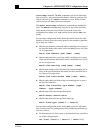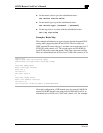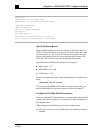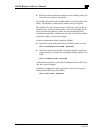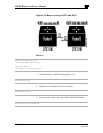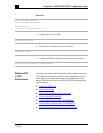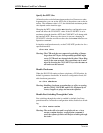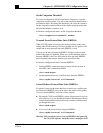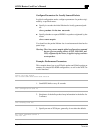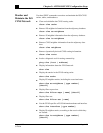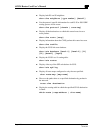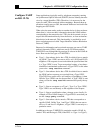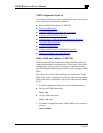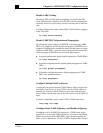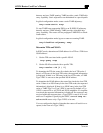
Chapter 9: AI2524 OSI/CLNP Configuration Steps
August 1997 Page 9-55
2524UM
Set the Congestion Threshold
If a router configured for CLNS experiences congestion, it sets the
congestion-experienced bit. You can set the congestion threshold on a
per-interface basis. By setting this threshold, you cause the system to
set the congestion-experienced bit if the output queue has more than
the specified number of packets in it.
In interface configuration mode, set the congestion threshold:
clns congestion-threshold
number
Transmit Error Protocol Data Units (ERPDUs)
When a CLNS packet is received, the routing software looks in the
routing table for the next hop. If it does not find one, the packet is dis-
carded and an error protocol data unit (ERPDU) is sent.
You can set an interval between ERPDUs. Doing so reduces band-
width if this feature is disabled. When you set the minimum interval
between ERPDUs, the Cisco IOS software does not send ERPDUs
more frequently than one per interface per ten milliseconds.
In interface configuration mode, transmit ERPDUs:
1. Send an ERPDU when the routing software detects an error in
data PDU; this is enabled by default.
clns send-erpdu
2. Set the minimum interval, in milliseconds, between ERPDUs.
clns erpdu-interval
milliseconds
Control Redirect Protocol Data Units (RDPDUs)
If a packet is sent out the same interface it came in on, a redirect pro-
tocol data unit (RDPDU) also can be sent to the sender of the packet.
You can control RDPDUs with one of these actions:
z
By default, CLNS sends RDPDUs when a better route for a given
host is known. You can disable this feature. Disabling this feature
reduces bandwidth because packets may continue to unnecessarily
go through the router.
clns send-rdpdu
z
You can set the interval times between RDPDUs.
clns rdpdu-interval
milliseconds
Warning: SNPA masks are never sent, and RDPDUs are ignored by
the Cisco IOS software when the router is acting as an IS.



